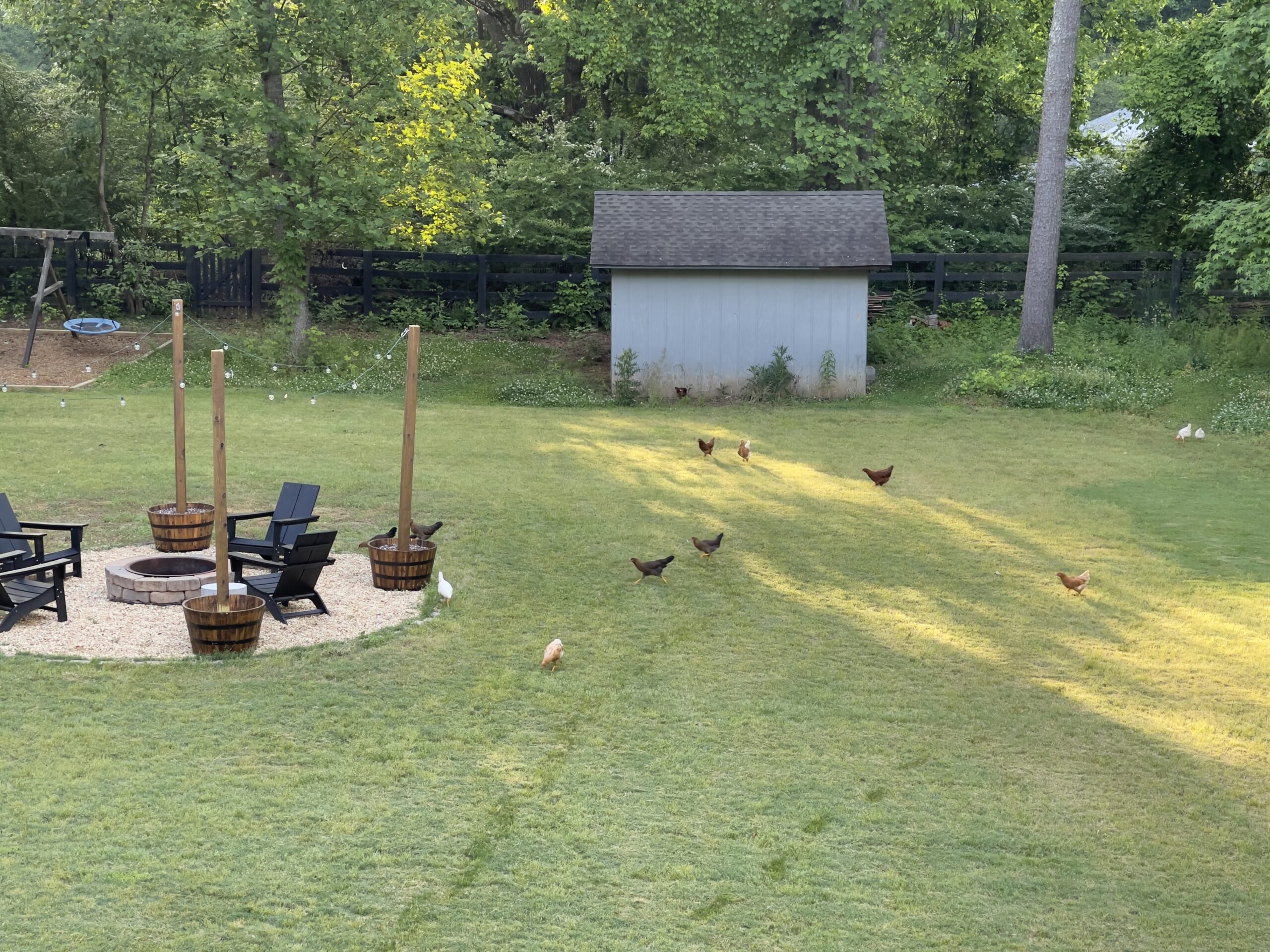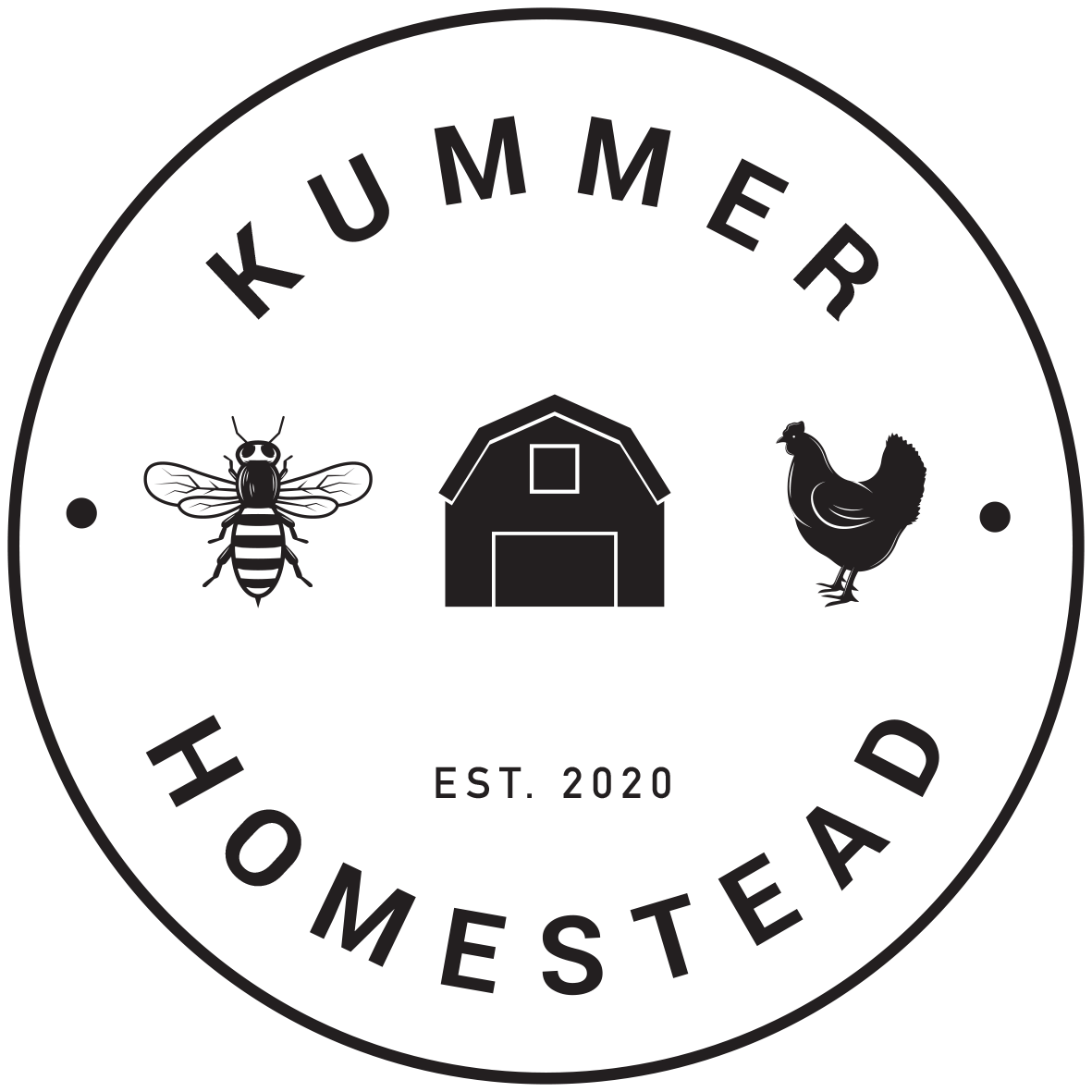If there’s one thing I wish we’d paid more attention to in our early years of raising chickens, it’s manure management. It may not sound glamorous, but the way you handle chicken manure has a profound influence on your flock’s health, productivity, and the overall sustainability of your homestead.
After all, chicken droppings are more than mere waste — they’re a potent resource (and sometimes a potent problem) that can work for or against you, depending on the system you choose.
So in this article, I’ll explain two main methods of managing chickens (and their manure): pasture-raising and the deep litter method.
And I’ll also share how we’ve blended these systems into a hybrid approach that was born out of trial, error, and some hard-learned lessons (like the time we thought building stationary coops was a brilliant idea… spoiler alert: it wasn’t).
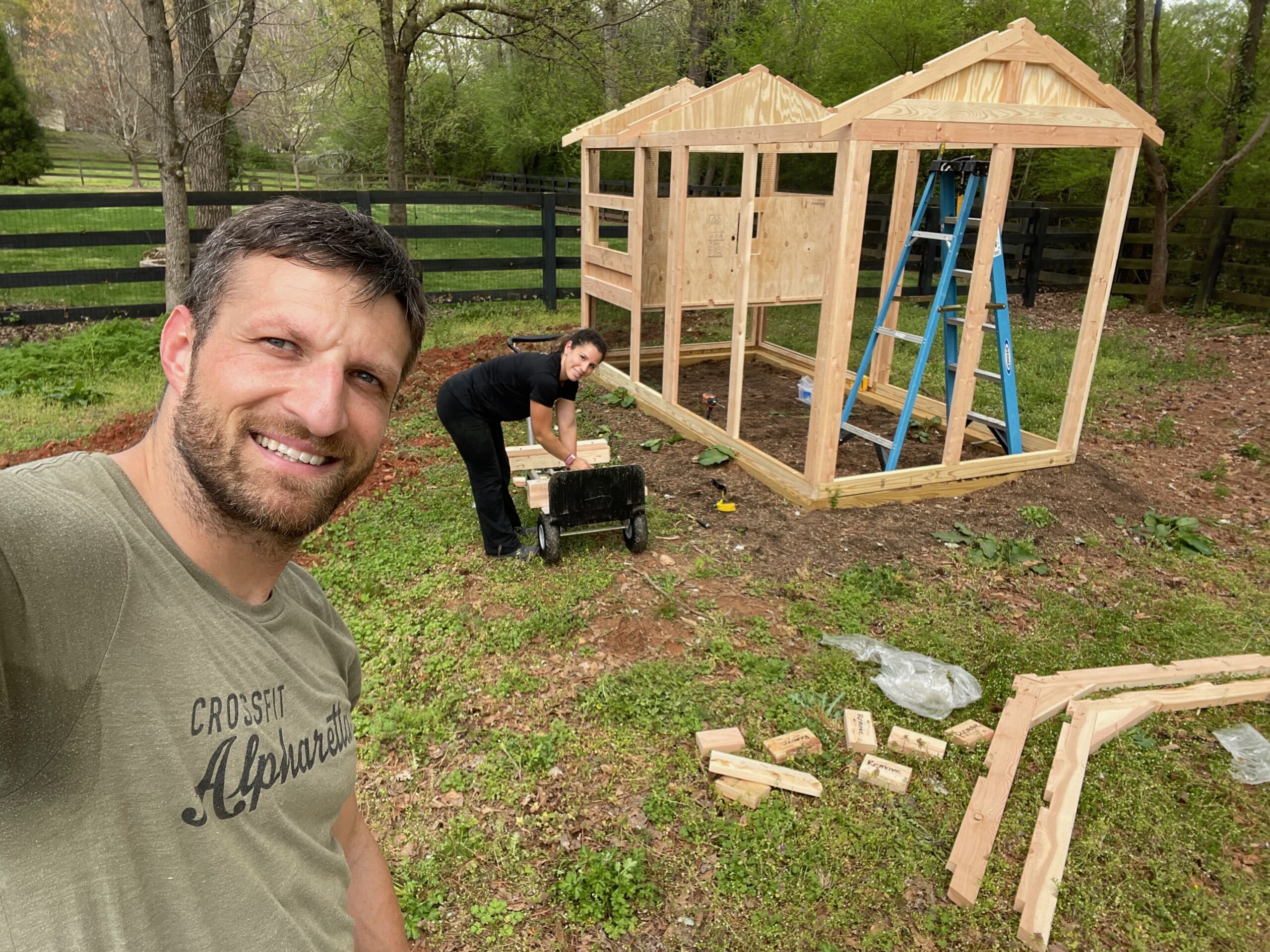
Here are the key takeaways:
- There’s no silver bullet and no universal right or wrong. We all have different land sizes, climates, predator pressures and time constraints.
- Pasture-raising requires effort and space. For those who can manage the labor and have the acreage, it’s a highly rewarding system — but it’s not an ideal fit (or even possible) in every scenario.
- The deep litter approach requires diligence. You have to monitor ammonia levels, add bedding regularly, and do occasional turning to ensure healthy composting.
- A hybrid system offers flexibility, allowing you to adapt your approach based on the season, your space constraints, and your flock size.
Pasture-Raising Is a More Natural Approach
Pastured chickens have access to a variety of grasses, seeds, insects, and even small critters. From a nutritional standpoint, this diversified diet can lead to healthier birds and more nutrient-dense eggs and meat. Additionally, the manure is spread out over a larger area, acting as a natural fertilizer and minimizing any ammonia build-up that would otherwise happen in a confined space.
Pros of Pasture-Raising
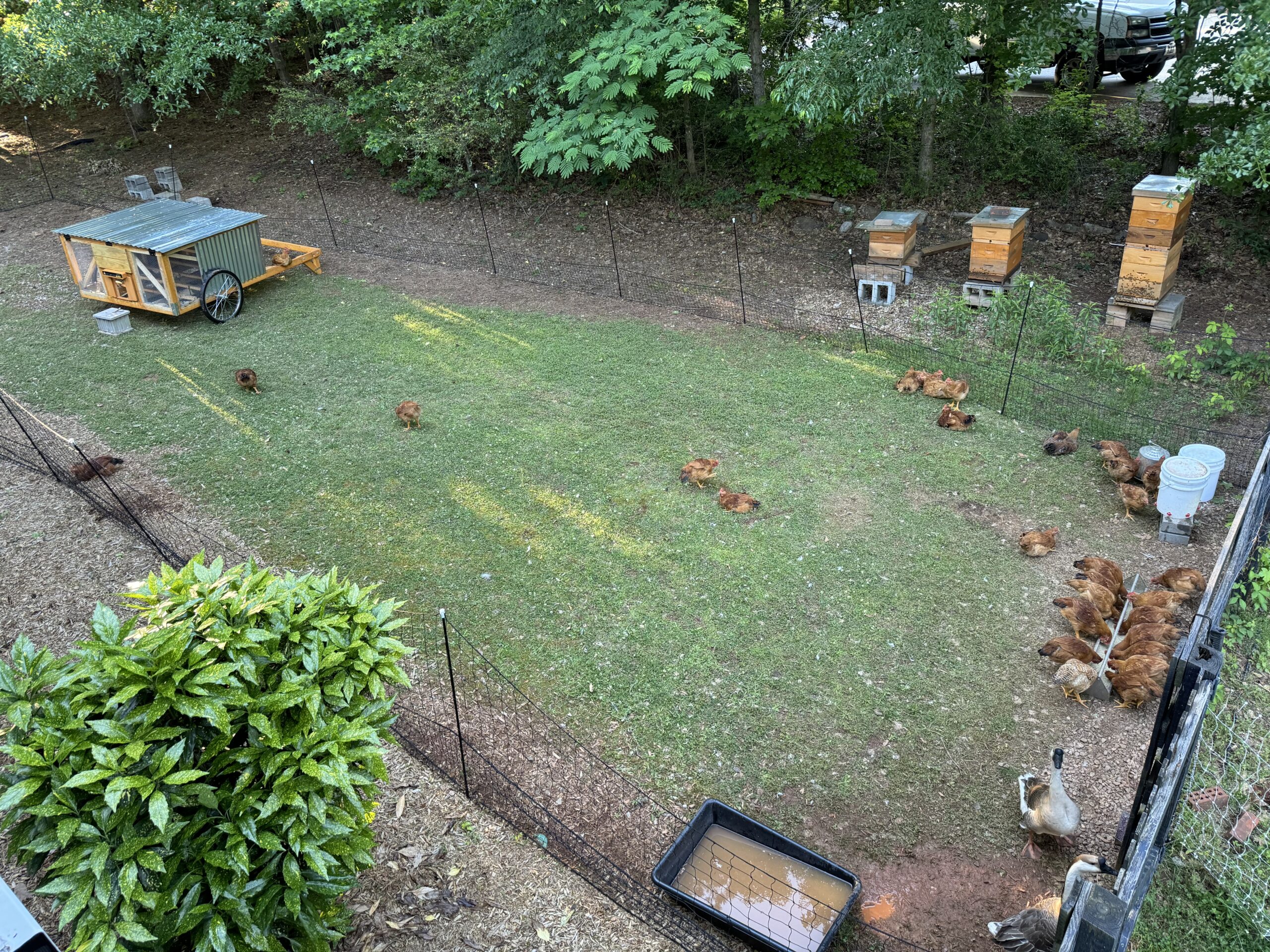
- It promotes natural behavior. When birds get to scratch, peck and roam freely, it reduces their stress and makes them less aggressive. Behavioral enrichment is a huge plus (bored chickens will pick on each other).
- It improves soil fertility. Manure distribution helps build healthier soil over time. You’re effectively closing the loop between feed input and natural fertilizer output.
- It leads to healthier birds. Plenty of fresh air and reduced exposure to stagnant manure piles decreases the likelihood of respiratory issues and parasitic infections.
- Your birds will have superior egg and meat quality. Many people notice deeper yolks, richer flavors, and higher nutritional values in pasture-raised products.
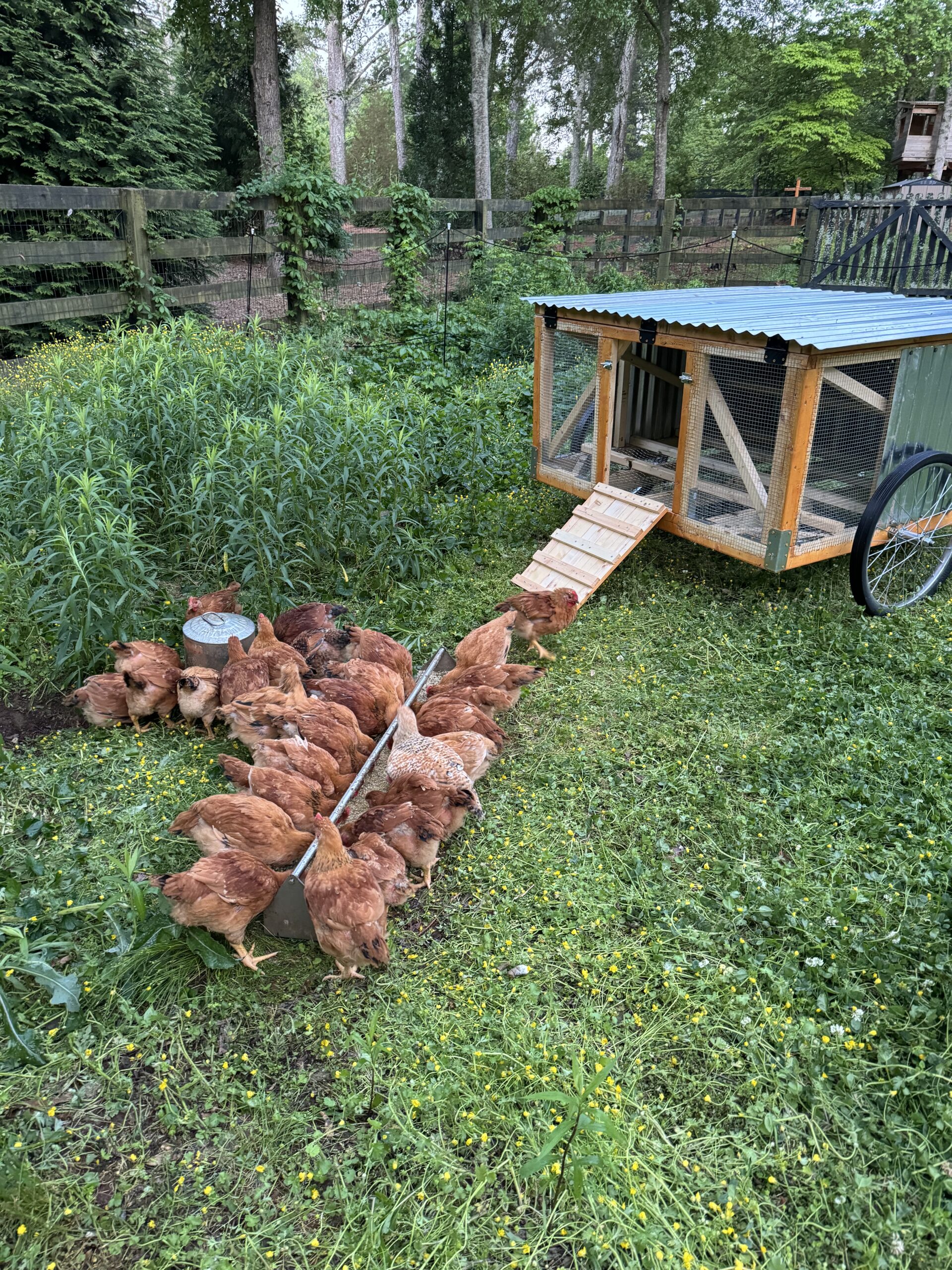
While we consume most of the eggs our hens produce, we sell a few dozen eggs each week to friends who swear that they’re the best eggs they’ve ever tasted. I attribute that to using high-quality feed (we use this feed from New Country Organics, which is free of soy, corn and PUFAs) and our pasture management strategies.
Cons of Pasture-Raising
- Increased predator pressure. Ranging birds out in the open can attract hawks, foxes and other predators.
- It’s labor-intensive. You need to move fences or tractors frequently, especially if you’re dealing with large flocks.
- There are land and weather considerations. Not everyone has enough acreage, and bad weather can stress birds if you can’t provide adequate shelter.
- It requires constant pasture maintenance. You have to monitor pasture regrowth, especially with stock setting or more intensive rotations.
For many homesteaders, raising chickens on pasture means fencing off a section of land and leaving the birds for extended periods (or until the end of their days). That’s called stock setting, and it’s the simplest approach to pasture-raising chickens due to its low labor requirements.
The problem with stock setting is that it’s destructive to the land and soil. In other words, your chickens will turn your land into a moonscape over time.
The better and much more labor-intensive approach is rotational grazing, which is an approach traditionally used in the context of ruminant animals.
In the context of chickens, the term means moving chickens to fresh pasture on a regular schedule (often every 1-2 weeks). The idea is to allow the land they just left to rest and recover, regrowing vegetation and diluting any buildup of manure.
One of the easiest ways to implement pasture rotations is by using mobile chicken tractors (like these two we’ve tested) – especially for meat birds, which are often much less inclined than egg laying breeds to cover great distances in search of food.
By implementing a pasture rotation system for your chickens, you get all the benefits associated with chicken manure (e.g. soil fertilization) without any of its downsides (e.g., ammonia build up or parasites).
The Deep Litter Method Provides a Regular Supply of Compost
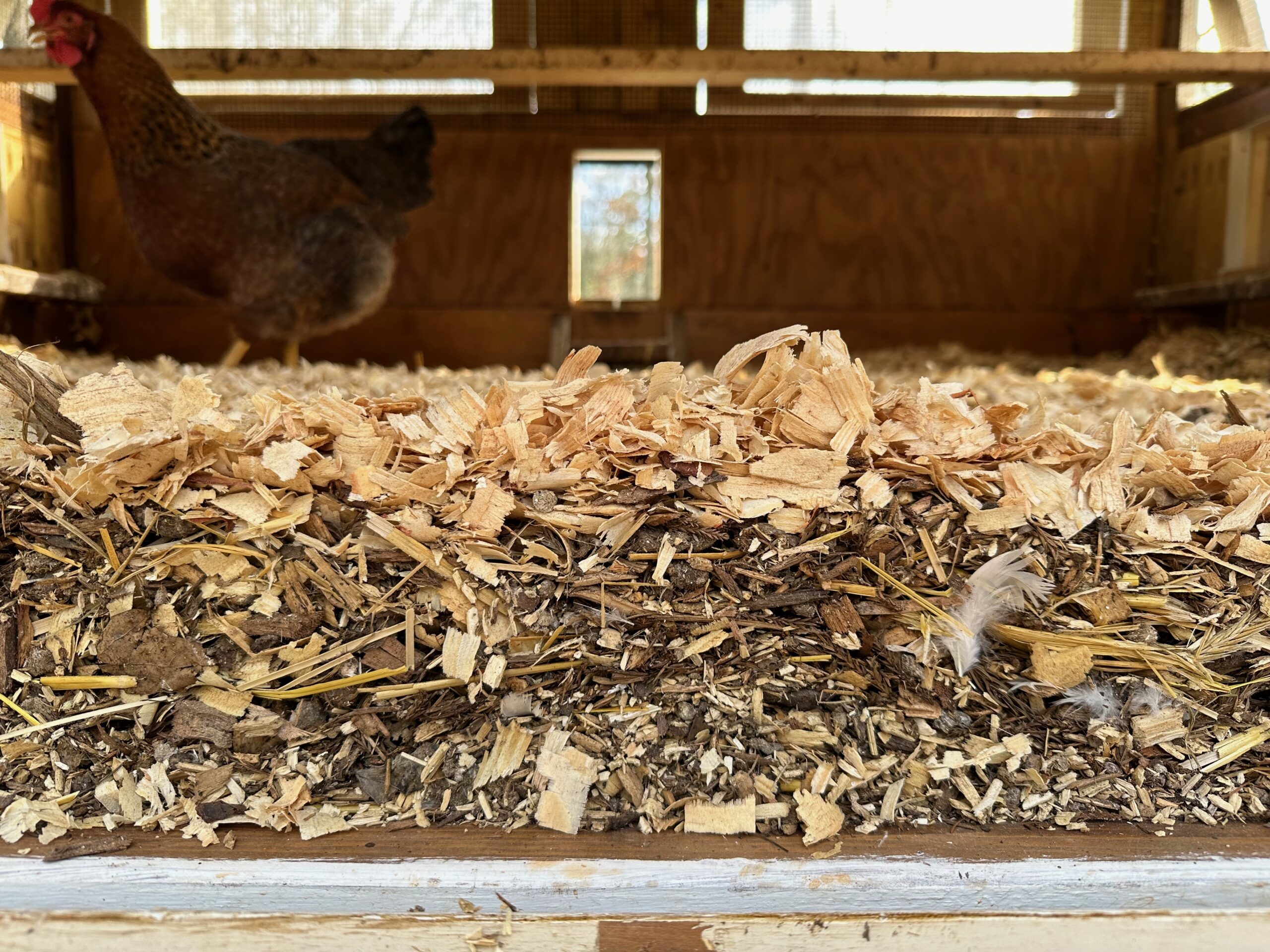
The deep litter method involves layering carbon-rich bedding, such as pine shavings, straw or hemp, on the coop floor and letting the manure gradually break down within this bedding. Over time (and if managed correctly) you get a composting effect right under your chickens’ feet.
Here’s how it works: The secret lies in maintaining a suitable carbon-to-nitrogen ratio of 25:1 to 30:1. Chicken manure is nitrogen-rich, while bedding material is carbon-rich. By adding fresh bedding as manure accumulates, you encourage microbial activity to break it all down. Turn it occasionally (or let your chickens do it) to ensure proper aeration and decomposition.
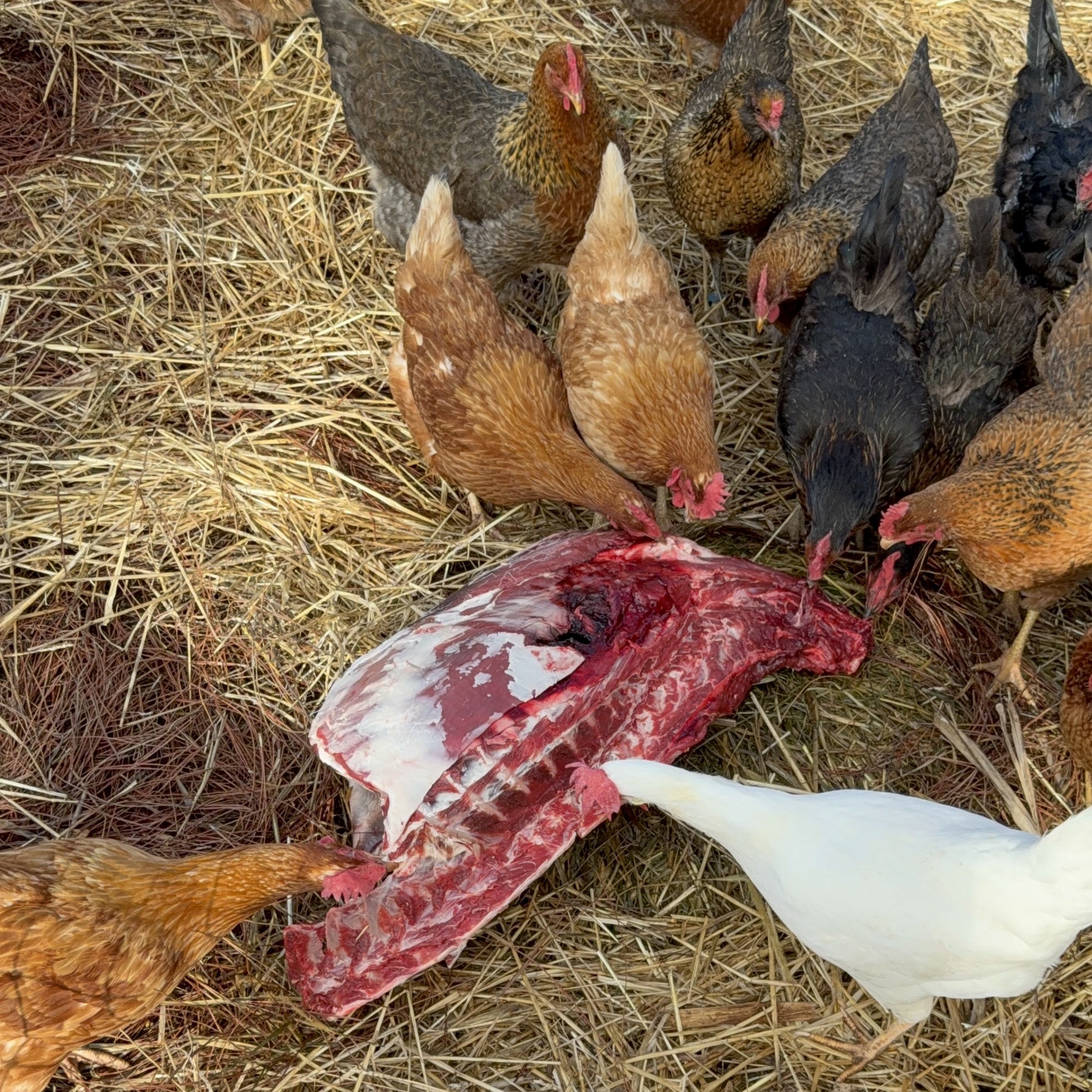
One important aspect of compositing is to have enough biomass. In other words, the layers of manure and carbonaceous material need to be at least a foot thick for temperatures inside the mix to rise. So make sure your chicken coop (henhouse or the run) has deep enough floors to allow the bedding to reach a critical depth).
Pros of Deep Litter
- Helps keep your flock healthy. With good aeration and enough carbon, ammonia levels stay low, reducing respiratory issues.
- Provides thermal benefits. Composting generates heat, which is particularly helpful for your chickens during colder months (depending on where you live). The heat also impedes parasite growth.
- Requires less frequent clean outs. Instead of cleaning the coop weekly or monthly, you can often go several months at a time. In fact, some deep-litter proponents only do a major cleanout once or twice a year.
- Gives you a steady supply of compost. You end up with a nutrient-rich soil amendment for the garden.
Cons of Deep Litter
- There’s a risk of ammonia buildup. If you skimp on bedding or fail to turn the litter, ammonia can spike, stressing your birds’ respiratory systems.
- It can create an environment conducive to pests. Flies, mites, and other pests can flourish if the litter gets too moist or compacted.
- It requires stationary coops. Birds don’t get to express their full range of natural behaviors if the coop is their sole habitat.
- There are foot health concerns to be aware of. Sharp wood chips can cause tiny cuts on chicken feet, leading to infections like bumblefoot.
Why We Use a Hybrid Approach (and the Mistakes We Made)
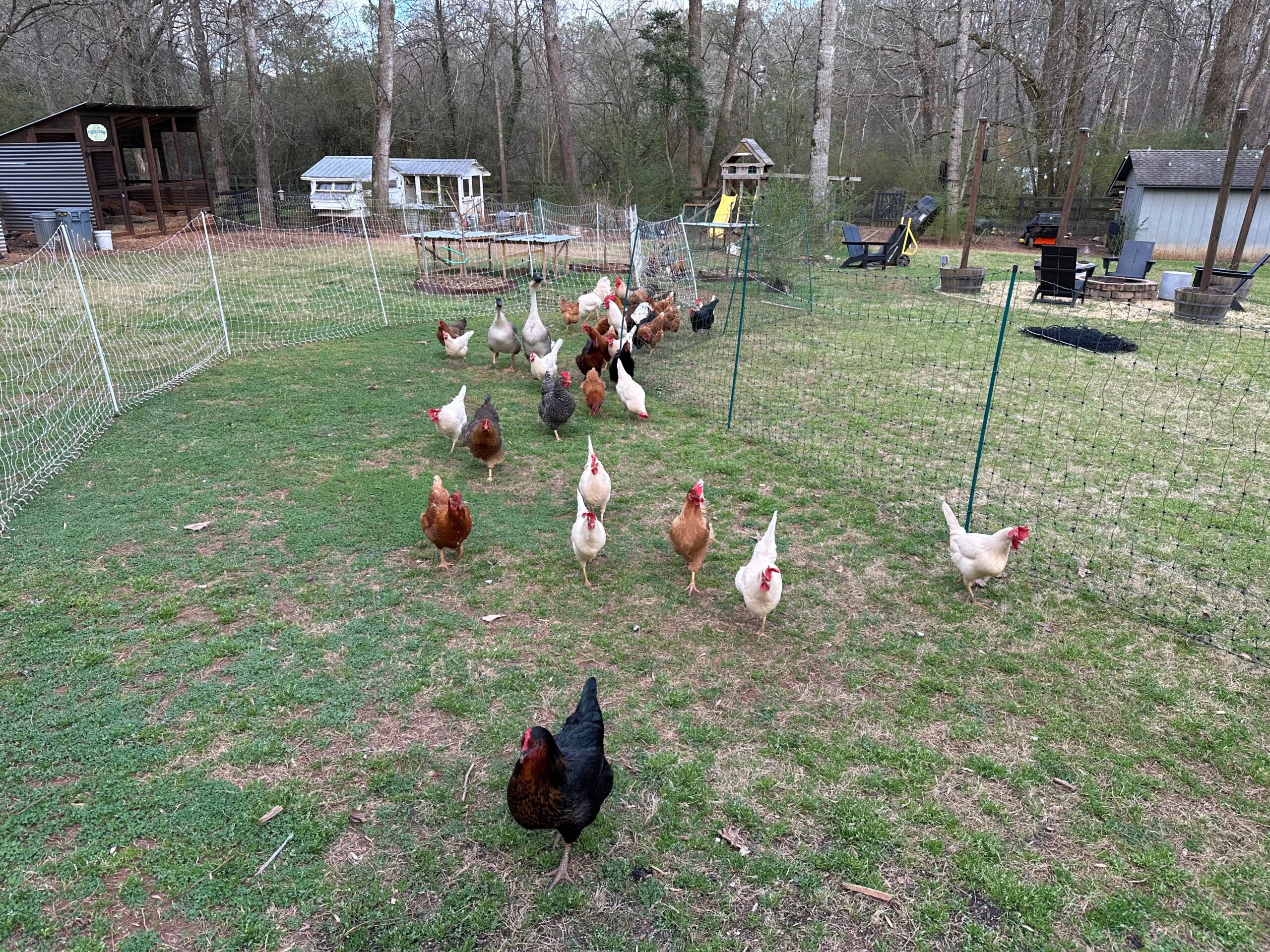
I’ll be the first to admit that we made the mistake of building two stationary coops right off the bat. Although stationary coops work fine with the deep litter method, they limit your ability to integrate true pasture-based management.
We have implemented pasture rotations on our property, but because of the stationary coops, the fence lines always have to lead back to the coops. That’s a pain in the butt because it severely limits our flexibility as far as fence placement is concerned.
So here’s what we currently do…
Spring through fall: Our egg layers get to roam on fresh pasture (rotational grazing). We move fences every 1-2 weeks. In addition, inside the coops, we maintain deep litter with pine shavings or hemp. This hybrid method helps us utilize composting benefits while still giving birds ample outdoor time.
Our meat birds stay in mobile chicken tractors that we move daily until they’re butchered. We use two types of chicken tractors — one Suscovich-style tractor and one Justin Rhodes ChickShaw. The former has enough room for the birds to remain enclosed 24/7, while the latter requires temporary fencing to move with the tractor. Watch this video to learn more about the pros and cons of each mobile chicken tractor.
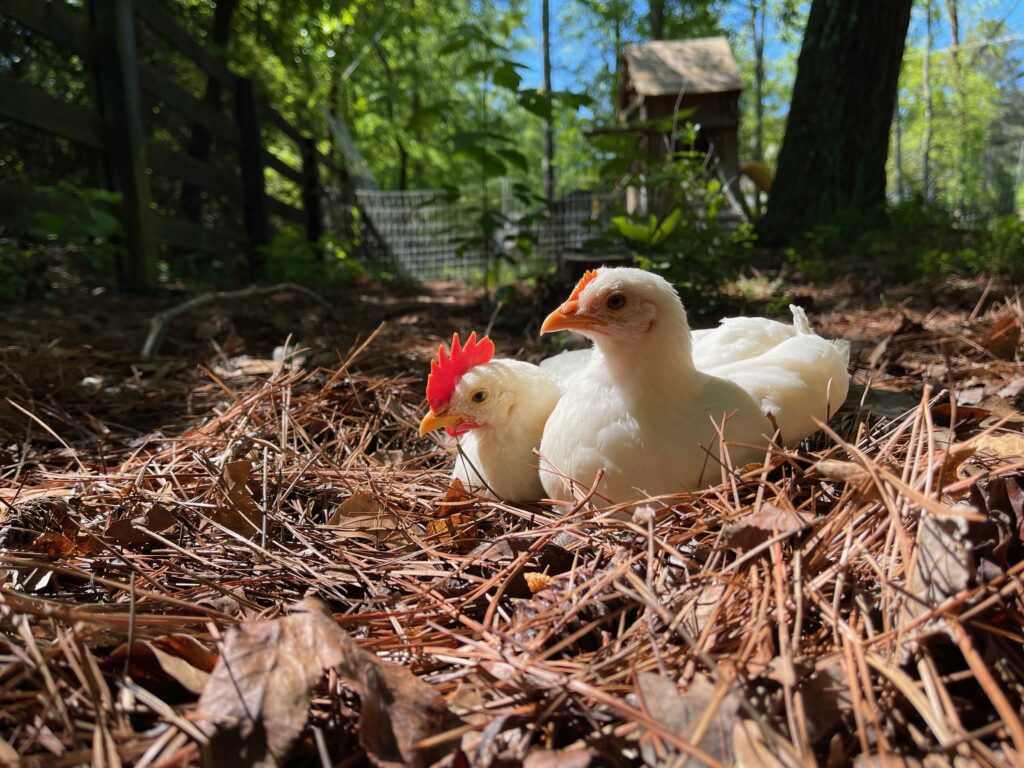
Winter: Our flock stays in a fenced off, wooded area filled with straw or other carbon-rich materials. We tried wood chips once, but ended up with a spate of bumblefoot, likely from small cuts on their feet. Since switching to straw, we haven’t had any issues.
Looking Ahead to Our Future Plans
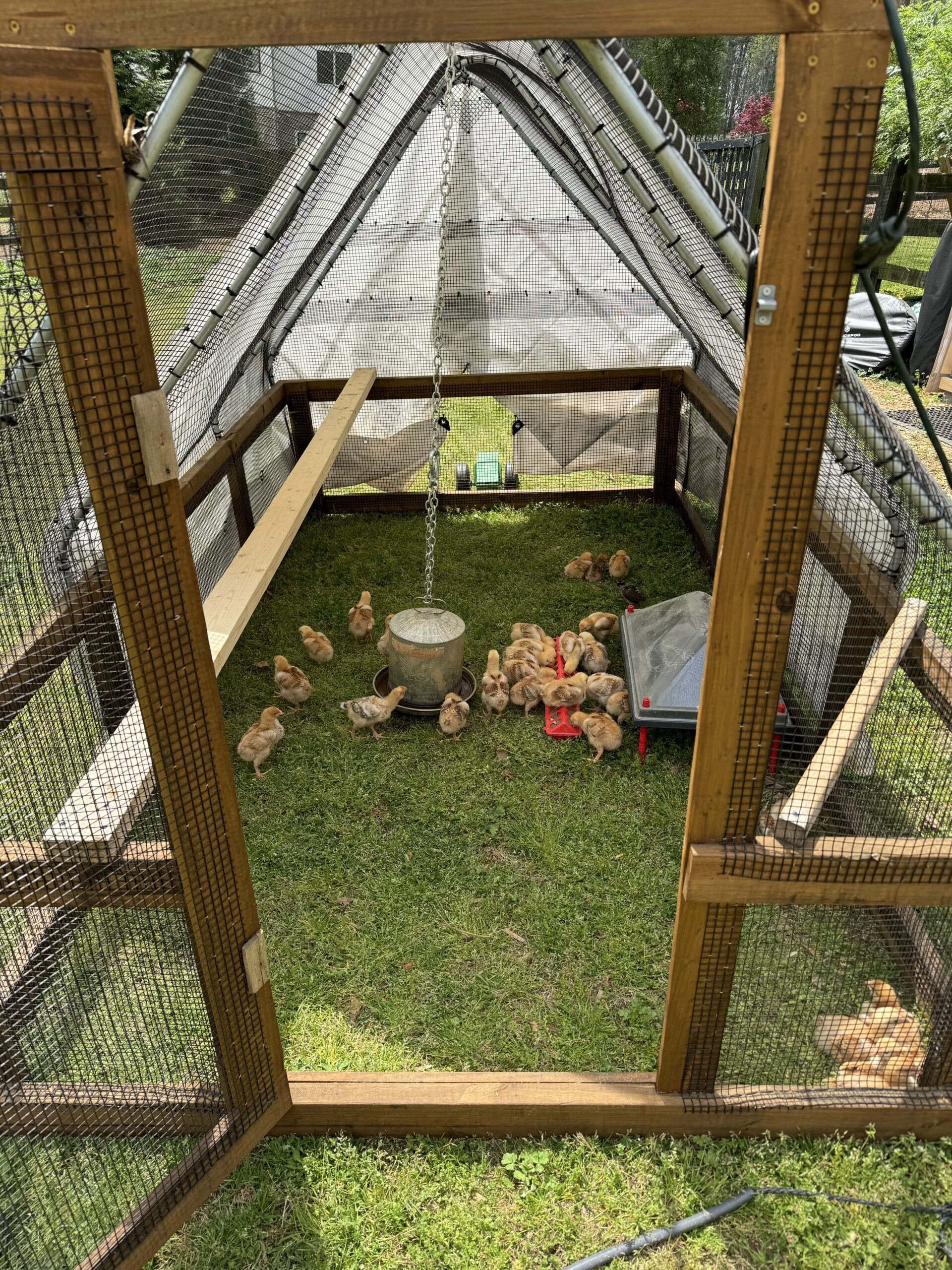
We’re excited to do more rotational “grazing” (for both egg layers and meat birds) on our new property, which will be about 30 times bigger than our current property.
The meat birds will likely stay in mobile chicken tractors, which makes daily or weekly moves more manageable. Our egg layers are pretty savvy foragers, so we’ll continue letting them free-range when the weather’s nice while providing shelter for bad weather and overnight using mobile chicken tractors.
When winter rolls around, we’ll confine our egg-layers to a high tunnel (essentially a greenhouse structure) where we leverage deep bedding to help keep them warm and keep manure from piling up in a concentrated spot. When winter’s over, that soiled bedding then becomes prime compost!
Final Thoughts
Raising chickens in a way that balances their welfare, your labor, and the land’s resources is as much an art as it is a science. We’ve learned a lot the hard way (especially when it comes to coop design). But that’s the nature of homesteading. Each year, we refine our methods and move one step closer to a closed-loop system where the chickens benefit the soil and the soil, in turn, feeds them.
If you’re exploring either pasture-raising, deep litter, or a little bit of both, just remember to keep an eye (and nose!) on the manure situation. Your birds’ health, your wallet, and your land will thank you for it.
Let me know in the comments — do you raise your flock strictly on pasture, rely on deep litter, or try a hybrid approach? We’re all in this chicken game together, so share your success stories (or your cautionary tales) and help each other out!

Michael Kummer is a healthy living enthusiast, the founder of MK Supplements and the host of the Primal Shift podcast. His goal is to help people achieve optimal health by bridging the gap between ancestral living and the demands of modern society. He runs the Kummer Homestead with his wife Kathy and their two children.
